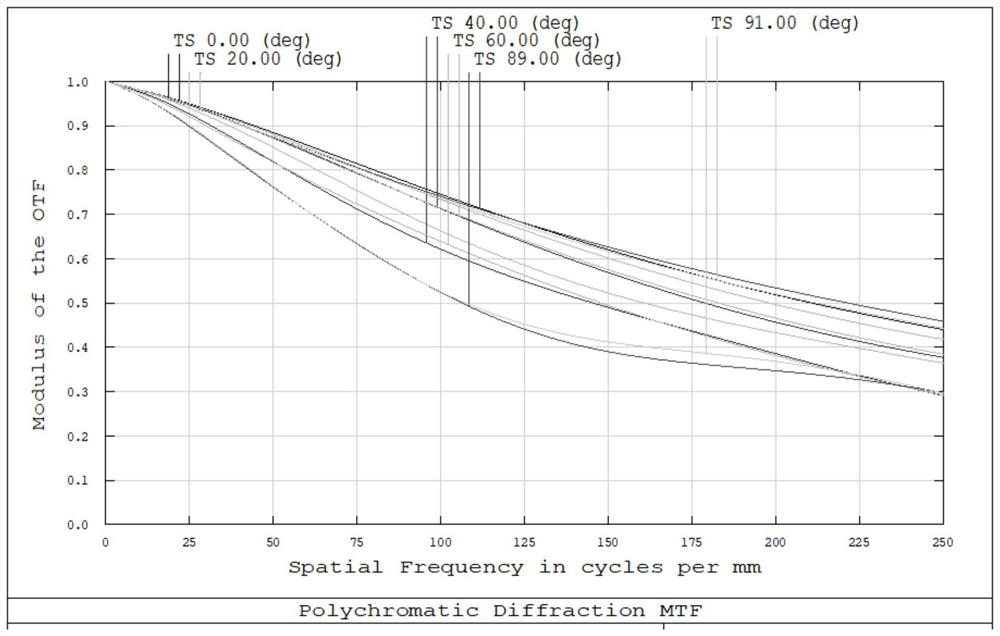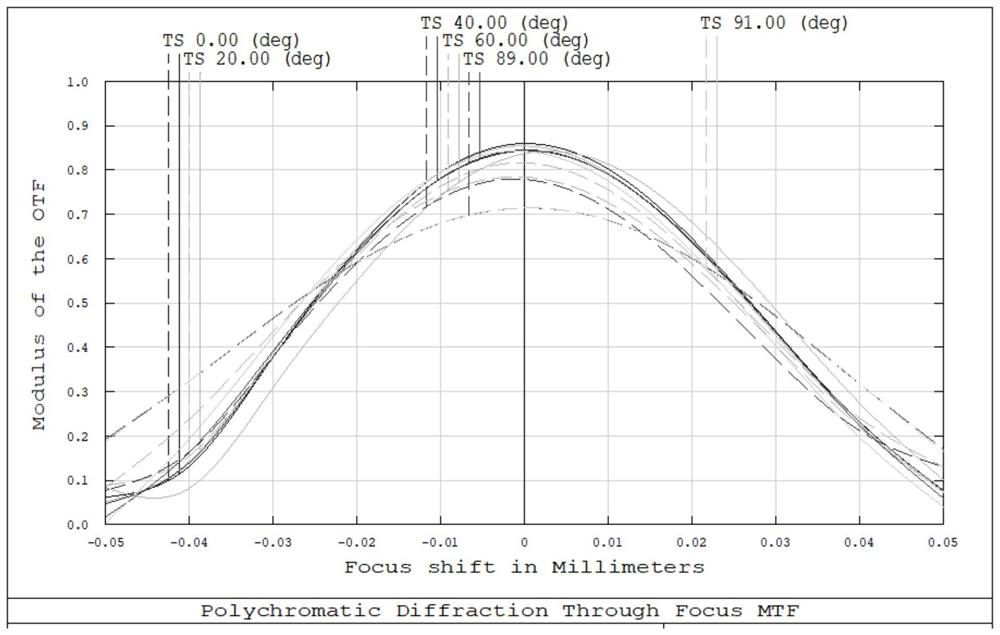Positive distortion fisheye lens
A fisheye lens and positive distortion technology, applied in the lens field, can solve the problems of low pixel, high noise, and small pixel ratio, etc., and achieve clear and uniform imaging pictures, good infrared confocal performance, and good picture brightness.
- Summary
- Abstract
- Description
- Claims
- Application Information
AI Technical Summary
Problems solved by technology
Method used
Image
Examples
Embodiment 1
[0105] refer to figure 1 As shown, this embodiment discloses an ortho-distortion fisheye lens, which sequentially includes a first lens 1 to a tenth lens 10 along an optical axis from the object side A1 to the image side A2, and the first lens 1 to the tenth lens The lenses 10 each include an object side facing the object side A1 and allowing the imaging light to pass through, and an image side facing the image side A2 and allowing the imaging light to pass through;
[0106] The first lens 1 has a negative refractive power, the object side of the first lens 1 is convex, and the image side is concave;
[0107] The second lens 2 has a negative refractive power, the object side of the second lens 2 is convex, and the image side is concave;
[0108] The third lens 3 has a negative refractive power, the object side of the third lens 3 is concave, and the image side is concave;
[0109] The fourth lens 4 has a negative refractive power, the object side of the fourth lens 4 is conv...
Embodiment 2
[0126] Cooperate Figure 7 to Figure 12 As shown, the concave-convex surface and refractive power of each lens in this embodiment and the first embodiment are roughly the same, and the optical parameters such as the radius of curvature of the lens surface and the thickness of the lens are different.
[0127] The detailed optical data of this specific embodiment is shown in Table 2.
[0128] The detailed optical data of table 2 embodiment two
[0129] surface Types of Caliber size (diameter) radius of curvature thickness material Refractive index Dispersion coefficient focal length OBJ subject surface 0.000 Infinity Infinity 1 first lens 24.671 21.329 1.294 TAF3D 1.80420 46.503 -19.886 2 15.920 8.918 3.296 3 second lens 14.618 13.959 0.700 M-NBFD130 1.80610 40.731 -8.053 4 10.508 4.349 4.054 5 third lens 10.000 -27.510 0.794 H-FK61 1.49700 81.595 -5.727 ...
Embodiment 3
[0135] Cooperate Figure 13 to Figure 18 As shown, the concave-convex surface and refractive power of each lens in this embodiment and the first embodiment are roughly the same, and the optical parameters such as the radius of curvature of the lens surface and the thickness of the lens are different.
[0136] The detailed optical data of this specific embodiment is shown in Table 3.
[0137] The detailed optical data of table 3 embodiment three
[0138] surface Types of Caliber size (diameter) radius of curvature thickness material Refractive index Dispersion coefficient focal length OBJ subject surface 0.000 Infinity Infinity 1 first lens 24.294 19.847 1.294 TAF3D 1.80420 46.503 -18.683 2 15.295 8.326 3.348 3 second lens 14.618 13.959 0.700 M-NBFD130 1.80610 40.731 -8.053 4 10.508 4.349 3.999 5 third lens 10.000 -28.595 0.943 H-FK61 1.49700 81.595 -5.562 ...
PUM
 Login to View More
Login to View More Abstract
Description
Claims
Application Information
 Login to View More
Login to View More - R&D
- Intellectual Property
- Life Sciences
- Materials
- Tech Scout
- Unparalleled Data Quality
- Higher Quality Content
- 60% Fewer Hallucinations
Browse by: Latest US Patents, China's latest patents, Technical Efficacy Thesaurus, Application Domain, Technology Topic, Popular Technical Reports.
© 2025 PatSnap. All rights reserved.Legal|Privacy policy|Modern Slavery Act Transparency Statement|Sitemap|About US| Contact US: help@patsnap.com



